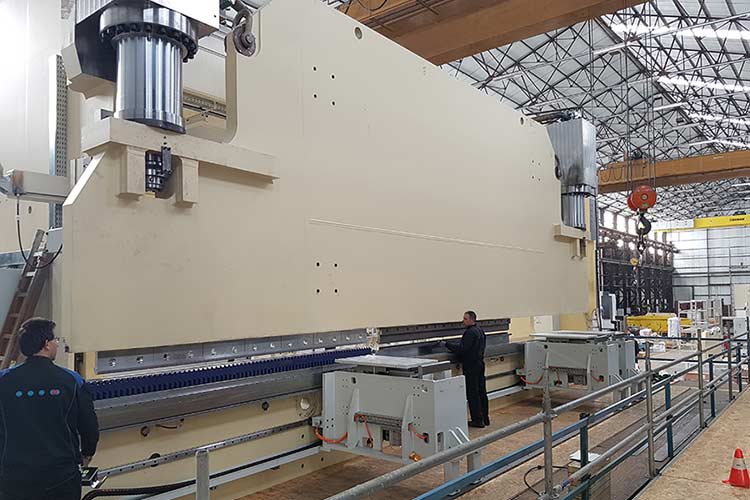LVD is a heavy bending specialist, having built and installed custom heavy-duty press brakes as large as 3000 tons. Recently completed is a custom-designed PPEB-H 1600-ton 12-meter press brake. Soon to be installed, the machine will be bending parts for the transportation industry.
Servo-controlled with advanced hydraulics and electronics, the custom press brake can form parts up to 12 meters long. The machine has an opening table/ram of 1070 mm, cylinder stroke of 600 mm and a gap of 1000 mm. It features heavy-duty CNC sheet followers T1-T2-T3, each supporting a maximum 600 kg, adjustable along the length of the press brake for handling large plate material. It is equipped with a 9-axis heavy back gauge and automatic programmable bed crowning. The machine is also designed for a tandem set up with a PPEB-H 640-ton 4.5-meter press brake.
Sophisticated features
Modern technology and material handling options make the job of bending heavy plate easier.
- LVD’s Easy-Form® in-process angle monitoring and correction system adapts the ram position in real-time to ensure precise, consistent bending. The bending process is not interrupted, and no production time is lost.
- The TOUCH-B touch-screen control and integrated CADMAN-B software help ensure accuracy on the first bend and consistent accuracy thereafter, and reduce the time it takes to go from part program to finished part.
- Programmable gauges, sheet followers, front sheet supports and other material handling equipment add to the overall efficiency of the bending operation and are often a necessity for precise bending of large, hard-to-handle work pieces.
Why 1600 tons?
Heavy plate fabricators in industries like heavy equipment, ship building, defense, and transportation, working with high tensile steels and fabricating parts in materials greater than 6 mm in thickness, turn to high-tonnage press brakes to:
- Fabricate parts in medium to large sections
- Bend tough steel plate
- Form long parts in a single pass
- Reduce the number of welds and secondary processing operations
- Gain versatility in producing large parts


